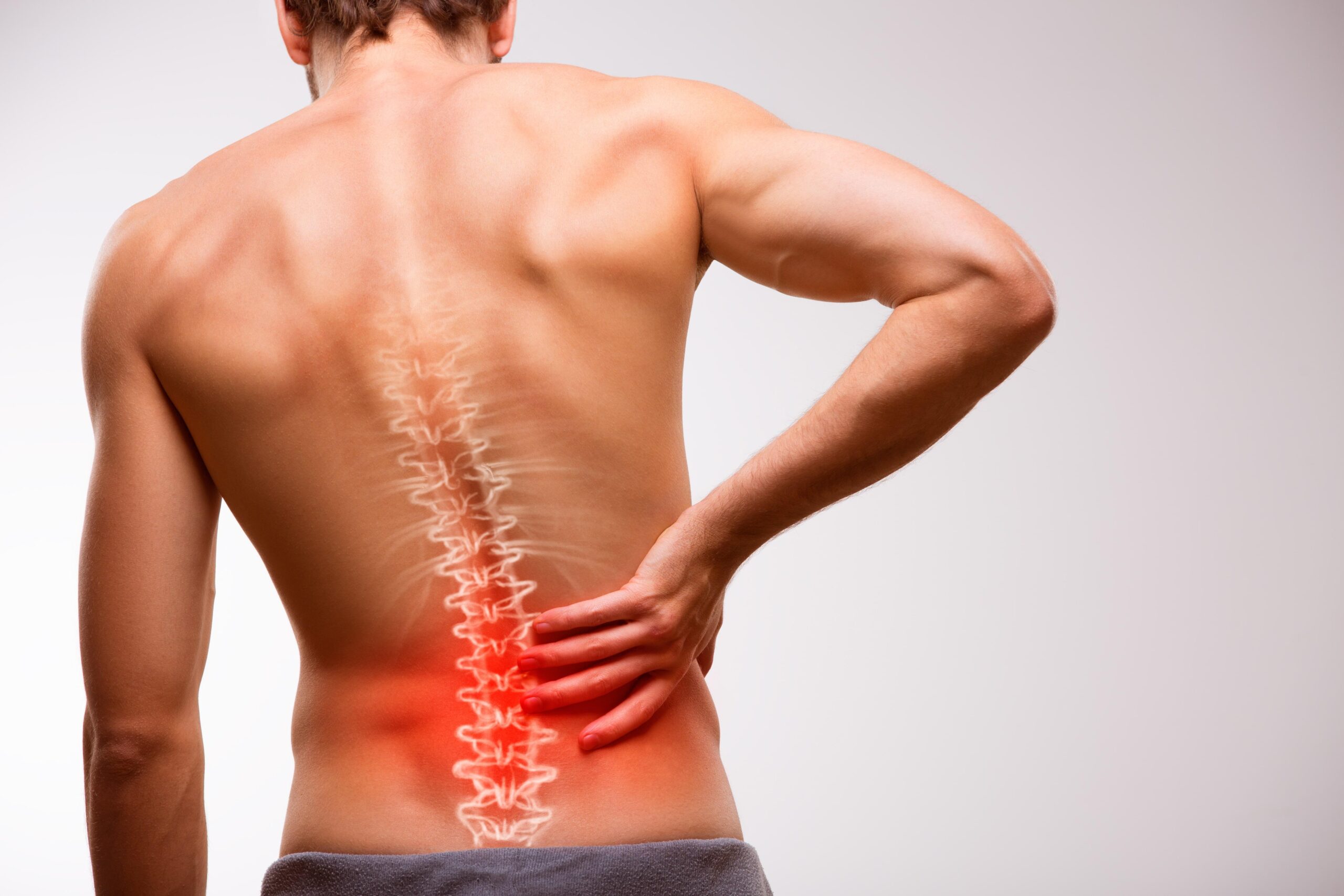Low back pain is pain felt in your lower back or lumbar spine. Your lower back is the part of your spine between the bottom of your ribs and the top of your pelvis. This part of your spine is designed to be strong and allows you to turn, twist or bend, stand, walk, and lift.
Signs and symptoms:
- Pain that is dull or achy contained to the low back
- Stinging, burning pain that moves from the low back to the backs of the thighs, sometimes into the lower legs or feet; can include numbness or tingling (sciatica)
- Muscle spasms and tightness in the low back, pelvis, and hips
- Pain that worsens after prolonged sitting or standing
- Difficulty standing up straight, walking, or going from standing to sitting
When to see a doctor
Most back pain gradually improves with home treatment and self-care, usually within a few weeks. Contact your doctor if your back pain:
- Persists past a few weeks
- It is severe and doesn't improve with rest
- Spreads down one or both legs, especially if the pain extends below the knee
- Causes weakness, numbness or tingling in one or both legs
- Is accompanied by unexplained weight loss
In rare cases, back pain can signal a serious medical problem. Seek immediate care if your back pain:
- Causes new bowel or bladder problems
- Is accompanied by a fever
- Follows a fall, blow to your back or other injury
In most instances, back pain is non-specific. Still, your doctor will need a detailed medical and family history and look for specific signs and symptoms to determine the underlying cause.
کمر کا درد
کمر کا درد وہ درد ہے جو آپ اپنی کمر کے نچلے حصے میں يا ریڑھ کی ہڈی میں محسوس کرتے ہیں۔ کمر کا نچلا حصہ ریڑھ کی ہڈی کا وہ حصہ ہے جو پھسلیوں کے نچلے حصے سے شروع ہوتا ہے اور کولہے کی ہڈیوں کے اوپر تک ہے۔ قدرتی طور پر جسم کا یہ حصہ مضبوط بنایا گیا ہے تاکہ آپکو مڑنے یا جھکنے، چلنے اور اٹھنے میں آسانی ہو۔
کمر کے درد کی علامات:
سست یا تکلیف دہ احساس جو کمر کے نچلے حصے میں ہی محسوس ہو۔
چبھن یا جلن جو کمر کے نچلے حصے سے ران کے پچھلے حصے تک جائے، کبھی یہ تکلیف پاؤں کے نچلے حصے یا تلووں تک بھی جاتا ہے۔ اس میں چبھن کے ساتھ پاؤں سن بھی ہو سکتے ہیں (عرق ا لنساء)۔
کمر کے نچلے حصے، شرونی اور کولہے کی ہڈی کا جکڑ پن
ایسا درد جو زیادہ دیر بیٹھنے یا کھڑے رہنے سے بڑھ جائے
سیدھے کھڑے ہونے، چلنے، یا کھڑے سے بیٹھنے تک جانے میں دشواری۔
ڈاکٹر سے کب ملیں؟
عموماً کمر کا درد گھریلو علاج اور احتیاط سے بہتر ہوجاتا ہے ۔ لیکن اگر آپکے درد میں یہ علامات شامل ہوں تو ڈاکٹر سے رجوع کریں:
کچھ ہفتوں سے جاری ہو۔
شدید ہے اور آرام سے بہتر نہیں ہوتا۔
ایک یا دونوں پاؤں میں پھیل جائے، خصوصاً گھٹنوں کے نیچے۔
ایک یا دونوں پیروں میں کمزوری، بےحسی، یا سنسناہٹ کا سبب بنتا ہو۔
کمر کے درد کے ساتھ وزن میں کمی واقع ہو۔
غّیر معمولی علامات میں کمر کا درد سنگین طبّی مسئلے کی نشاندہی کر سکتا ہے۔ ان علامات کے ظاہر ہونے کی صورت میں ہنگامی طور پر معالج سے رابطہ کریں:
آنتوں یا مثانے کے درد کے ساتھ ہو
بخار کے ساتھ ہو
چوٹ لگنے یا گرنے کے بعد ظاہر ہو
زیادتر کمر کے درد کی خاص وجہ سمجھ نہیں آتی مگر آپکا ڈاکٹر آپکا مکمل طبّی معاینه اور خاندانی طبّی کوائف کی جانچ کرے تو اندرونی کسی بیماری کی نشاندہی کر سکتا یے ۔
Doctors to consult (Orthopedic Surgeon):
Dr Ali Ahmed, Dr Masood Qazi Ahmed
Note: Click the Doctor's name to make an appointment.
Reference:
https://www.nhs.uk/conditions/back-pain/causes/
https://patient.info/bones-joints-muscles/back-and-spine-pain/lower-back-pain
https://www.bettersafercare.vic.gov.au/clinical-guidance/emergency/low-back-pain
https://www.mayoclinic.org/diseases-conditions/back-pain/symptoms-causes/syc-20369906
https://www.spine-health.com/conditions/lower-back-pain/lower-back-pain-symptoms-diagnosis-and-treatment

